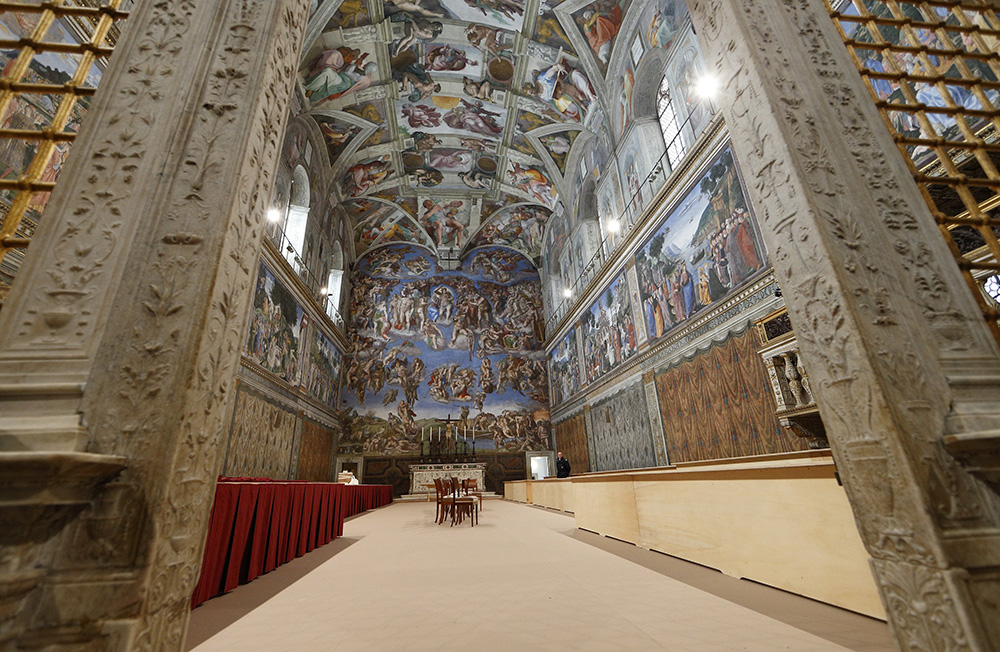
WASHINGTON — The phrase “seeing is believing” likely rings true for anyone who visits any of the sites from the listing: “Sacred Spaces: The 100 Most Holy Places on the Earth,” recently published by Patheos, an online spiritual platform.
That’s because believers are often strengthened in their faith by visiting a site significant to their religious tradition. But they can also experience a faith boost from visiting a sacred spot of another tradition, according to a world religion historian who helped with this ranking.
Alonzo Gaskill, author and professor of church history and doctrine at Brigham Young University in Provo, Utah, said that if a Catholic visited the Sanctuary of Our Lady of Lourdes (which ranked 22 in the listing) they might think about the healing waters and recognize God’s hand in their tradition, but even a non-Catholic “might be provoked to think about their own faith tradition” if they were to visit.
“Different sites have different impactful experiences,” he told The Tablet, noting that even those with no faith can come away from visiting a sacred site with historical appreciation or sense of the connectedness of different cultures.
The list includes holy sites significant to major religions, including Christianity, Islam, Judaism, Hinduism, and Buddhism and was the first time the online platform did such an extensive project, although Travis Henry, senior director of content for Patheos, said they might do similar rankings in the future by continent.
“Selecting only 100 of the most holy places on Earth was the most challenging aspect of this initiative because there are so many sacred sites around the world. We could have easily included 500 additional sites filled with meaning,” he said.
He added that the list was meant more to start conversations and stir interest, noting that a lot of people might say their vote for the No. 1 spot might be a site considered to be in 50th place for someone else.
Henry said he hoped the ranking would serve as a library of holy sites and introduce people of different faiths to new sites.
He also found it interesting that some sites, including the No. 1 ranked Temple Mount in Jerusalem, is a sacred spot for Jews, Christians, and Muslims.
The ranking was put together from data about online searches and in-person visits of these sites and views of religious scholars, leaders, and writers from different faiths.
“This collection of sacred spaces represents some of the most significant holy sites throughout religions around the world,” said Gaskill. “Importantly, many of these sites have significance in multiple traditions — particularly in places like India, where Hindus, Buddhists, and Jains often worship at the same sites, or the Holy Land, where Jews, Christians, and Muslims each reverence many of the same sacred spaces.”
He also stressed that the list “offers something for everyone, from the simply curious to the religiously devout.”
After the list was compiled and sites tallied for each faith tradition, Henry said Catholics had the most sacred sites on the list. Twenty-five sites are specifically Catholic but eight more sites — from Christian tradition or shared with other faiths — also are of Catholic significance, such as places in the Holy Land related to the life of Jesus.
Catholic sites on the list include the Vatican, Sistine Chapel, European cathedrals, sites of Marian apparitions and two U.S. churches — St. Patrick’s Cathedral in New York (ranked 66th) and Santuario de Chimayo, a Catholic church and pilgrimage site in New Mexico (ranked 72nd.)
Next year, Gaskill intends to take students to a number of these sites. He said in his world religion classes he stresses that “every world religion has the same goal: to make us holy beings.”
As he sees it, these sacred sites around the world are “beacons of light in the midst of chaos, war, and hatred” where people come away feeling: “I want to be different.”
